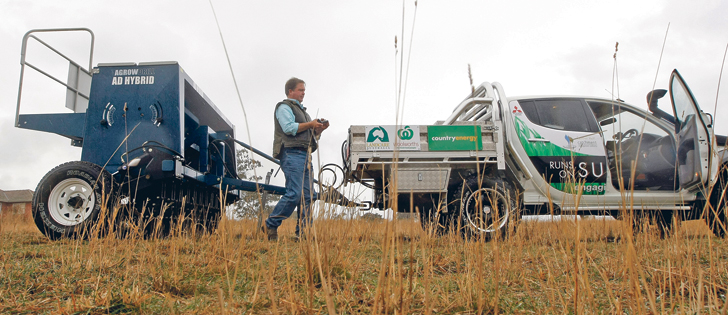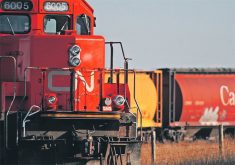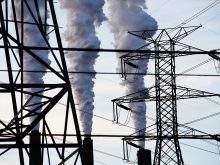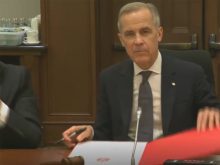This is the final instalment examining the issues surrounding carbon pricing, greenhouse gas emissions and how farmers can do their share without having to pay more than their fair share to do it.
Some Australian farmers saw their costs rise as new taxes shifted money from producers and processors to carbon reduction projects across that continent.
However, a change in government put a stop to all that.
Half a dozen years ago, a Labour government in Australia brought in an ambitious program that quantified greenhouse gas emissions from across society and set a price on them, transferring greenhouse gas taxes to those who were avoiding emissions or reducing them.
Three years ago this month, a Liberal government canned the idea.
Read Also

Farming Smarter receives financial boost from Alberta government for potato research
Farming Smarter near Lethbridge got a boost to its research equipment, thanks to the Alberta government’s increase in funding for research associations.
Farmers were exempted from paying the Australian tax directly, but they did absorb costs passed on to them by other industries.
Electricity, steel and other manufacturing sectors shifted their costs onto producers. Irrigation farmers who relied heavily on electricity saw large increases, along with other operations that rely on that power for fans, grain handling and processing.
Links to other stories in this Special Report:
- Alberta’s carbon tax plan may offer insight for others
- Carbon taxation
- Carbon tax: A bitter pill for farmers
- Scientists find surprise in soil’s freeze-thaw cycle: nitrous oxide emissions
- Alfalfa, grasses top choices to aid in carbon sequestration
- Meeting EU emission standards can be a hurdle
- Can equipment makers do more to make a greener machine?
- Download a PDF of the complete Special Report here
Under the carbon pricing program, emitters were allowed to earn marketable carbon credits in a scheme that paid them for shifting methane production from livestock to power generation, stopping pasture and field burning and improving carbon sequestration in soils. The hog industry saw government grants flow into some of its manure lagoons to sew those up.
“It didn’t last long, the carbon tax. By now we would have seen more costs for farmers, no doubts. Transportation fuels were set to be included,” said Don Campbell, a Victoria state crop and livestock producer.
The government said exemptions for agriculture were largely due to the complexity of quantifying greenhouse gas production, but some opponents of the carbon pricing programs felt it had more to do with the tax being unfashionable for food production.
The University of Melbourne and others developed greenhouse gas emission measurement models, which showed that agriculture was responsible for about one seventh of the nation’s output.
The government measures, models, encourages producers to reduce emissions and reports results through its department of energy in a process mandated in legislation beginning in 2014.
“It was the irrigators that took the big blow, the ones on the grid. Some electricity prices really jumped after the tax came on,” said Campbell.
“There were some tax credits available for us, if you participated in programs or bought new gear.”
A 15 percent tax credit was created for farmers who bought conservation tillage equipment in 2013 and 2014. That ended after the carbon pricing bill was repealed.
As part of the Carbon Farming Futures fund, which was set up during the Labour government’s experiment in carbon pricing, dozens of agricultural research programs were initiated by farm groups and universities, looking at mitigation opportunities and carbon credit development.
Australia has had a carbon market since 2006 and has flirted with cap and trade regimes. Agricultural producers can sell credits based on their management practices.
The Clean Energy Regulator now audits and ensures that carbon credits earned are legitimate, but farmers are responsible for providing empirical evidence of carbon emission improvements. The CER also auctions credits and abatement projects.
Louisa Kiely, who runs an agricultural carbon credits firm in Australia, said the Australian model of selling credits has credibility in the global marketplace.
As a result, farmers can earn salable Australian Carbon Credit Units by practicing conservation tillage, finishing beef cattle faster while still on pasture to reduce methane, installing more efficient water and manure pumping systems and planting trees.
The director of Carbon Farmers of Australia said producers can participate in 25 and 100 year projects that generate credits that the government has been guaranteeing on behalf of large emitters, providing producers with 10 years of payments for their credits.
Said Campbell: “It still appears a bit wobbly, but for those that are getting an income from it, I am sure it’s great.”
The last three CER auctions of Australian carbon credits saw prices of $10.23, $10.69 and $11.82 per tonne.


















